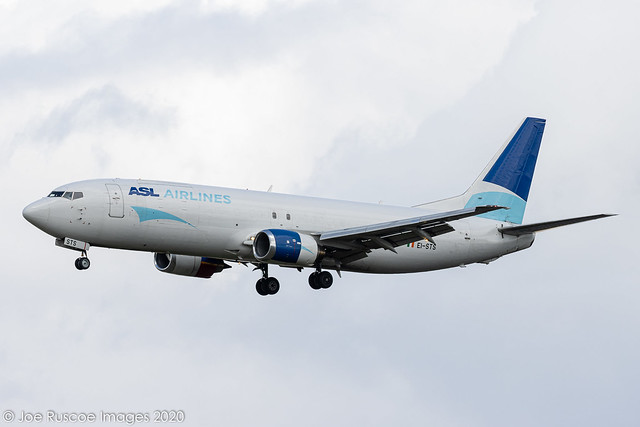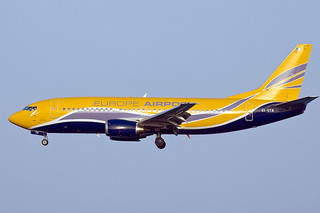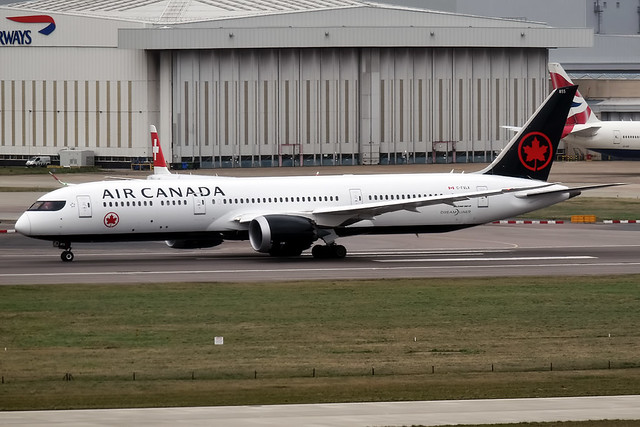Air Contractors AT42 at Glasgow on Feb 22nd 2012, approached stall, oversped flaps and approached stall again during ILS approach
Last Update: August 8, 2013 / 19:12:00 GMT/Zulu time
Incident Facts
Date of incident
Feb 22, 2012
Classification
Report
Airline
Air Contractors
Departure
Newcastle, United Kingdom
Destination
Glasgow, United Kingdom
Aircraft Registration
EI-FXA
Aircraft Type
ATR ATR-42
ICAO Type Designator
AT42
The AAIB released their final report concluding the probable cause of the serious incident was:
The appropriate airspeed was not maintained during the approach because standard operating procedures were not observed, monitoring was not effective and there was diminished crew cooperation during recovery actions.
The performance of the crew may have been affected by tiredness or fatigue, caused by diminished quality of rest in the period prior to flight duty.
The AAIB reported that following the flight no log entries were made, the captain told the engineer there had been a problem with the autopilot. The AAIB continued that the first officer subsequently informed the engineer that the autopilot was not at fault and the flight recorders should be preserved, however, no formal report was made. After the crew went to the hotel, the first officer contacted the airline's safety department, who in turn informed the AAIU (Irish Accident Investigation Unit) and the AAIU informed the AAIB, who then opened an investigation into the occurrence rated a serious incident.
The AAIB reported the captain (58, ATPL, 6,389 hours total, 3,900 hours on type) was pilot flying, the first officer pilot monitoring for the sector to Glasgow. The crew had been rostered together for the first time and had flown from Paris to Newcastle before continuing to Glasgow.
Shortly after departure from Newcastle the aircraft entered instrument meteorological conditions. Although the company had established a "sterile flight deck" policy permitting only operation related talk between the pilots below FL100, the captain initiated conversations about themes not related to operating the aircraft, the first officer remained polite but short in his replies. The captain yawned a number of times during the flight. Both pilots missed or misheard ATC communication.
Due to flying in cloud and according to ambient temperatures the crew had activated level 2 ice protection, which included beside pitot tube heating and windshields (level 1) also anti-icing of propellers, flight control horns and side windows (level 3 is to be selected upon ice accretion being detected on the airframe and provides aircraft and engine anti-ice). Upon selecting level 2 the margins for angle of attack protection decrease and icing speeds are to be used.
While descending towards Glasgow the crew computed the reference speed at 99 knots for non-icing and 114 knots for icing conditions, due to the fact that level 2 ice protection systems were activated the speed for icing conditions should have been used, the first officer however commented the 99 knots could be used. The captain did not address which speed he wanted to use.
At 3000 feet, 215 knots and 9.8nm north of the aerodrome ATC provided a vector to bring the aircraft onto final which prompted the captain to comment: "Nice short final". The engine torque was reduced to bring the airspeed down. Shortly afterwards ATC cleared the aircraft to descend to 2000 feet, the captain commented "I’LL HAVE TO COME DOWN A BIT QUICKER THAN THAT, WON’T I" and increased the rate of descent.
While capturing the localizer the approach mode was armed and the engines were reduced to idle power and the rate of descent was reduced, the aircraft descended through 2500 feet at 185 knots. Descending through 2100 feet at 140 knots flaps were extended to 15 degrees the engine torque was increased to 20%, 15 seconds later the autopilot levelled the aircraft at 2000 feet, the engine torque was reduced to 3%. Neither pilot noticed the decreasing airspeed and increasing attitude as the autopilot progressively increased the nose up attitude until it reached 11.2 degrees at an airspeed of 111 knots about 6.5nm from the runway.
At that point the stall warning and stick shaker activated, the autopilot disconnected, the captain pitched the aircraft down to about 10 degrees nose down and advanced the power levers to almost full power, the first officer demanded to bring the nose up, the captain refused to get the nose up, the aircraft reached a minimum speed of 104 knots until the aircraft began to accelerate again. At 125 knots and 1600 feet MSL the captain began to gradually bring the nose up. The captain returned the aircraft to 1900 feet and levelled the aircraft at 98% engine torque, the airspeed still increased, ATC queried again whether the aircraft was established, the first officer acknowledged they were established and ATC handed the crew off to tower. While reading back the hand off the airspeed exceeded 170 knots, the flap speed limit, and the overspeed warning activated, the power levers were retarded to 1%.
The flight director began to capture the glideslope 4.8nm before touchdown at 1850 feet and the aircraft descended along the glideslope, the airspeed still decayed until it reached 111 knots again at an angle of attack of 10.5 degrees (still below the stick shaker/stall warning threshold), the crew attempted to re-engage the autopilot, the autopilot disconnected immediately again. Engine power was increased to 45%, the aircraft accelerated to 115 knots, the autopilot was successfully re-engaged and the aircraft continued to a safe landing.
The AAIB analysed: "Although the flight progressed normally until the approach to Glasgow there was evidence that the commander was not operating in a manner consistent with the company’s procedures. Standard calls and responses were not always carried out correctly, he engaged in conversation on non-operational topics below FL100 and did not always use standard radiotelephony phrases. Several items from the company’s prescribed briefing topics were omitted from the approach briefing for Glasgow.
This was his first night-flying duty following a period during which he had slept ‘normal’ hours, at local night. Although he stated that he was well-rested prior to flight, the incident occurred almost 24 hours after the end of his last proper sleep. Before his flying duty, he drove approximately 2 hrs and 45 minutes to his base. Consequently, knowingly or not, he may have been tired or fatigued."
The AAIB further stated: "The manner in which the commander responded to monitoring calls by the co-pilot is likely to have discouraged further input at a time when effective cross‑cockpit communication would have assisted in ensuring safe flight. Fatigue or tiredness caused by the pilots’ diminished quality of rest in the period prior to this flight duty would have influenced effective monitoring."
The AAIB concluded the analysis: "It was fortunate that the co-pilot reported this serious incident in a sufficiently timely manner to enable preservation of the CVR recording."
Incident Facts
Date of incident
Feb 22, 2012
Classification
Report
Airline
Air Contractors
Departure
Newcastle, United Kingdom
Destination
Glasgow, United Kingdom
Aircraft Registration
EI-FXA
Aircraft Type
ATR ATR-42
ICAO Type Designator
AT42
This article is published under license from Avherald.com. © of text by Avherald.com.
Article source
You can read 2 more free articles without a subscription.
Subscribe now and continue reading without any limits!
Read unlimited articles and receive our daily update briefing. Gain better insights into what is happening in commercial aviation safety.
Send tip
Support AeroInside by sending a small tip amount.
Related articles
Contractors B734 at Shannon on Sep 22nd 2019, cargo door indication
An Air Contractors Boeing 737-400 freighter, registration EI-STS performing freight flight AG-2 from Shannon (Ireland) to East Midlands,EN (UK), was…
Air Contractors B734 at East Midlands on Apr 29th 2014, parts of left main gear failed
An Air Contractors Boeing 737-400 freighter, registration EI-STD performing freight flight QY-1748 from Paris Charles de Gaulle (France) to East…
Air Contractors B733 near Cork on Jun 24th 2014, suspected fuel leak
An Air Contractors Boeing 737-300, registration EI-STA performing flight AG-419J from Belfast International,NI (UK) to Barcelona,SP (Spain) with 150…
Air Contractors A30B at Bratislava on Nov 16th 2012, nose gear collapse on landing, runway excursion
The French BEA have released their final report in French concluding the probable causes of the accident were:Improper installation of one or more…
Air Contractors B733 near Dublin on Jun 15th 2013, burning smell in cabin
An Air Contractors Boeing 737-300, registration EI-STA performing flight AG-427J from Dublin (Ireland) to Dubrovnik (Croatia), was climbing out of…
Newest articles
EAT Leipzig A306 at Brussels on Nov 26th 2020, rejected takeoff above V1 due to difficulties becoming airborne
An EAT Leipzig Airbus A300-600 freighter on behalf of DHL, registration D-AEAI performing flight QY-841 from Brussels (Belgium) to Vitoria,SP…
Canada B789 at Auckland on Jan 13th 2026, unusual odour
An Air Canada Boeing 787-9, registration C-FVLX performing flight AC-40 from Auckland (New Zealand) to Vancouver,BC (Canada) with 269 passengers and…
Subscribe today
Are you researching aviation incidents? Get access to AeroInside Insights, unlimited read access and receive the daily newsletter.
Pick your plan and subscribePartner

ELITE Simulation Solutions is a leading global provider of Flight Simulation Training Devices, IFR training software as well as flight controls and related services. Find out more.
SafetyScan Pro provides streamlined access to thousands of aviation accident reports. Tailored for your safety management efforts. Book your demo today
AeroInside Blog
Popular aircraft
Airbus A320Boeing 737-800
Boeing 737-800 MAX
Popular airlines
American AirlinesUnited
Delta
Air Canada
Lufthansa
British Airways



